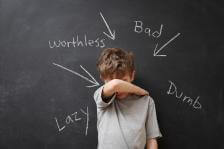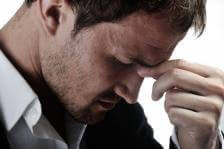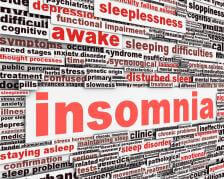Depression and RLS: What’s the Connection?
Restless Legs Syndrome (RLS) can both mimic depression and contribute to it. And in kids, RLS often looks like—surprise!—ADHD. Clinical psychologist Dr. Ellen Hendriksen explains the muddy relationship between RLS and other conditions.
Ellen Hendriksen, PhD

Psychological symptoms are not part of an RLS diagnosis. But RLS and psychology go together like the creepies and the crawlies. Here’s how:
Link Between RLS and Depression
As noted by Ask Science, RLS has been a recognized disorder since 1685, when Sir Thomas Willis, an English physician, wrote of patients who could not fall asleep due to “leapings and contractions” in their arms and legs. Willis wrote that they were so uncomfortable they were “no more able to sleep than if they were in a place of greatest torture.” More than 300 years later, most sufferers of RLS would probably agree.
Fast forward to the 1800s, when the first overlap of RLS with psychology appears. Theodor Wittmaack, a German neurologist, called the disorder “anxietas tibiarum,” loosely translated as leg movements combined with anxiety or depression. Wittmaack hit the restless toenail on the head; this is the essential description of RLS.
Separating RLS from depression can be like trying to unscramble an egg, but it’s important to differentiate. RLS sufferers misdiagnosed with depression may be prescribed SSRIs like Prozac or Zoloft, which can make the sensations of RLS worse, a phenomenon called “augmentation.” House call Doctor wrote about augmentation in her episode in 8 Tips to Treat Restless Legs Syndrome (RLS).
Parsing depression from RLS is difficult because the effects of sleep lost to RLS can mimic depression. Put the 9* symptoms of depression in a lineup, and 5 are instantly recognizable as problems stemming from lack of sleep. The culprits include:
depressed or irritable mood
- insomnia and/or excessive sleepiness
- trouble concentrating
- mental and/or physical sluggishness or agitation
- fatigue
In the doctor’s office, approximately 40% of individuals with RLS describe the 5 symptoms that look like depression. Without knowledge of additional RLS symptoms, misdiagnosis is easy.
But sometimes the one-two punch of RLS and depression does strike at once. Indeed, those with RLS have a 2- to 4-fold risk of developing a depressive disorder than those without RLS. Often, treatment of RLS will significantly improve the depression, thanks to improved sleep. If antidepressant medication is needed, non-SSRIs like Wellbutrin or the tricyclics don’t seem to cause the same worsening effects. As always, talk to your general physician or psychiatrist about any medication regimen.
*The remaining 4 symptoms of depression are 6) lack of interest or enjoyment, 7) significant weight gain or loss, 8) feelings of worthlessness or excessive guilt, and 9) thoughts of suicide or that life is not worth living.
What Comes First: Chicken, Egg, or RLS?
For a long time, mystery shrouded the order of the RLS-depression relationship. It was unclear whether RLS preceded depression, caused it, or was entirely different from it. In 2012, a study of over 56,000 women offered the first indication that RLS comes first, then depression follows, most likely due to disturbed or lost sleep (see References).
RLS starts deep in the genes. Let’s zoom in on a gene that plays a role in limb development. A 2007 study published in Nature Genetics showed that RLS is associated with variations in this gene, which suggests that RLS may have the workings of a developmental disorder. This and other gene variants that predispose RLS run in families—more than 70% of kids with RLS have at least one parent with RLS as well. However, simply carrying the variants doesn’t guarantee RLS; it just means a greater susceptibility.
Symptoms in Kids: RLS or ADHD?

See also: What is ADHD? Common—and Surprising—Symptoms
To further complicate matters, kids with the double whammy of ADHD and a family history of RLS may be at risk for particularly severe ADHD symptoms. So far, studies have been small, but it is possible that iron deficiency plays a role in the overlap. Consult your doctor, however, before administering iron to kids on your own.
So what can one do to treat RLS? Aside from seeing a physician, who may prescribe medication, here are 8 lifestyle changes you can implement right now to help you rest easier:
8 Ways to Minimize Your RLS Symptoms
Pain relievers. For very mild symptoms, over-the-counter pain relievers can lessen the sensations. Resist self-medicating with alcohol or over-the-counter sedatives; each one can make RLS worse.
- Iron supplements. Despite the connection between iron deficiency and RLS, consult your doctor before starting an iron supplement regimen or giving iron to kids. If your doctor OKs a supplement, keep it out of reach of children.
- Targeted relaxation. Relax leg muscles by soaking in a warm bath, alternate warm and cool packs, or massage the legs.
- Holistic relaxation. Yoga, meditation, or calming spiritual practices can dissipate the stress that exacerbates RLS.
- Exercise. Moderate, regular exercise is a universal balm. With RLS, avoid working out late in the day or at high intensities, as each may exacerbate symptoms. See also: Get-Fit Guy’s 10 Ways to Reduce Symptoms of Restless Legs Syndrome.
- Good sleep habits. A cool, dark, quiet room with no TV or other devices that bleep and bloop is important. If your schedule allows, some people living with RLS recommend a later bedtime and later wakeup time. Others swear by a strict bedtime to ensure enough sleep.
- Lifestyle changes. Experiment with cutting out caffeine, alcohol, and tobacco.
- Distraction. Fancifully called “mental alerting activities” by researchers, individuals with RLS report all manner of productive ways to pass the midnight hours they would rather spend sleeping: remodeling a basement, knitting, composing poetry, writing a novel – you name it.
Despite the increase in middle-of-the-night productivity, if you suffer from RLS, I know you’d much rather be sleeping peacefully, free of “leapings and contractions.” There is not yet a cure for RLS, but with information, support, and patience to discover the treatments—both medical and complementary—that work for you, it is possible to live well with RLS.
References
sleepfoundation.org/article/sleep-related-problems/restless-legs-syndrome-rls-and-sleep
Winkelmann, J. et al. (2007). Genome-wide association study of restless legs syndrome identifies common variants in three genomic regions. Nature Genetics, 39, 1000-6.
Konofal, E. et al. (2007). Impact of restless legs syndrome and iron deficiency on attention deficit/hyperactivity disorder in children. Sleep Medicine, 8, 711-715.
Li, Y. et al. (2012). Prospective study of restless legs syndrome and risk of depression in women. American Journal of Epidemiology, 176, 279-88.
Ohayon, M., O’Hara, R., Vitiello, M.V. (2012). Epidemiology of restless legs syndrome: A synthesis of the literature. Sleep Medicine Reviews, 16, 283-295.
Willis, T. (1685). The London Practice of Physick: Or the Whole Practical Part of Physick Contained in the Works of Dr. Willis. London: Bassett and Crooke.
Wittmaak, T. (1861). Pathologie und Therapie des Sensibilitäts-Neurosen. In: T. Wittmaak, Lehrbuch der Nervenkrankheiten, Teil 1: Pathologie und Therapie der sensiblen Neurosen. Leipzig: E. Schäfer.

Images courtesy of Shutterstock.

 depressed or irritable mood
depressed or irritable mood Pain relievers. For very mild symptoms, over-the-counter pain relievers can lessen the sensations. Resist self-medicating with
Pain relievers. For very mild symptoms, over-the-counter pain relievers can lessen the sensations. Resist self-medicating with 